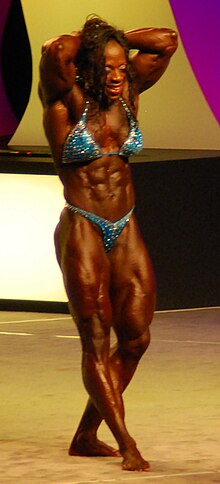Aladingsc Insights
Your go-to source for trending news and informative guides.
Pump It Up: The Unexpected Science Behind Muscle Gains
Uncover the surprising science of muscle gains and revolutionize your workout routine! Pump it up and witness the results!
How Muscles Really Grow: Unraveling the Science of Hypertrophy
Understanding how muscles grow involves delving into the science of hypertrophy, which is the process of increasing the size of muscle fibers. This typically occurs through two primary mechanisms: myofibrillar hypertrophy, which enhances the density and strength of muscle fibers, and sarcoplasmic hypertrophy, which increases the muscle's energy-storing capacity. When you engage in resistance training, your muscles experience micro-tears that trigger a repair process, leading to growth. The balance of protein synthesis and breakdown during recovery plays a critical role in this process. Therefore, focusing on adequate nutrition, particularly protein intake, is essential for optimal muscle development.
Additionally, progressive overload is crucial for stimulating hypertrophy. This principle involves gradually increasing the demands placed on your muscles by lifting heavier weights, increasing repetitions, or enhancing workout intensity over time. It is this consistent challenge that prompts the muscles to adapt and grow. To maximize gains, incorporating a variety of training techniques, such as compound exercises, isolation movements, and proper rest intervals, can greatly enhance growth potential. By unraveling the complexity of muscle hypertrophy, individuals can tailor their training regimens effectively to achieve their fitness goals.

The Role of Nutrition in Muscle Gains: What You Need to Know
Nutrition plays a critical role in achieving significant muscle gains during any strength training regimen. To build muscle effectively, your body requires a balanced intake of macronutrients, particularly proteins, carbohydrates, and fats. Proteins are the building blocks of muscle tissue, making it essential to consume high-quality protein sources, such as lean meats, dairy, and legumes. Aim for an intake of around 1.6 to 2.2 grams of protein per kilogram of body weight to maximize muscle synthesis. Additionally, carbohydrates serve as the primary fuel source during workouts and help trigger insulin release, which further aids in muscle recovery and growth.
Moreover, the timing of nutrition is just as important as the quality. Consuming a balanced meal or snack high in protein and carbohydrates within 30 minutes after your workout can significantly enhance recovery and promote muscle gain. Stay hydrated as well; water is crucial for optimal muscle function and nutrient transport. Ultimately, recognizing the interconnection between nutrition and muscle development allows fitness enthusiasts to tailor their diets effectively, aligning their caloric intake with their training goals and achieving the muscle gains they desire.
Can You Build Muscle Without Lifting Weights? Exploring Alternative Methods
Building muscle without lifting weights is entirely possible through a variety of alternative methods. Bodyweight exercises such as push-ups, squats, and lunges utilize your own body’s weight to create resistance, effectively promoting muscle growth. Additionally, activities like yoga and Pilates not only enhance flexibility but also engage and strengthen multiple muscle groups. Incorporating these methods into your fitness routine can lead to significant improvements in muscle tone and overall strength without the need for traditional weightlifting.
Another viable approach to muscle building is through functional training, which focuses on movements that mimic everyday activities. Exercises like kettlebell swings, medicine ball throws, and resistance band workouts leverage gravitational and elastic resistance to stimulate muscle development. Furthermore, high-intensity interval training (HIIT) can be an effective way to build muscle endurance and strength by incorporating short bursts of intense exercise followed by rest. By embracing these alternative fitness methods, you can achieve your muscle-building goals even without a gym full of weights.